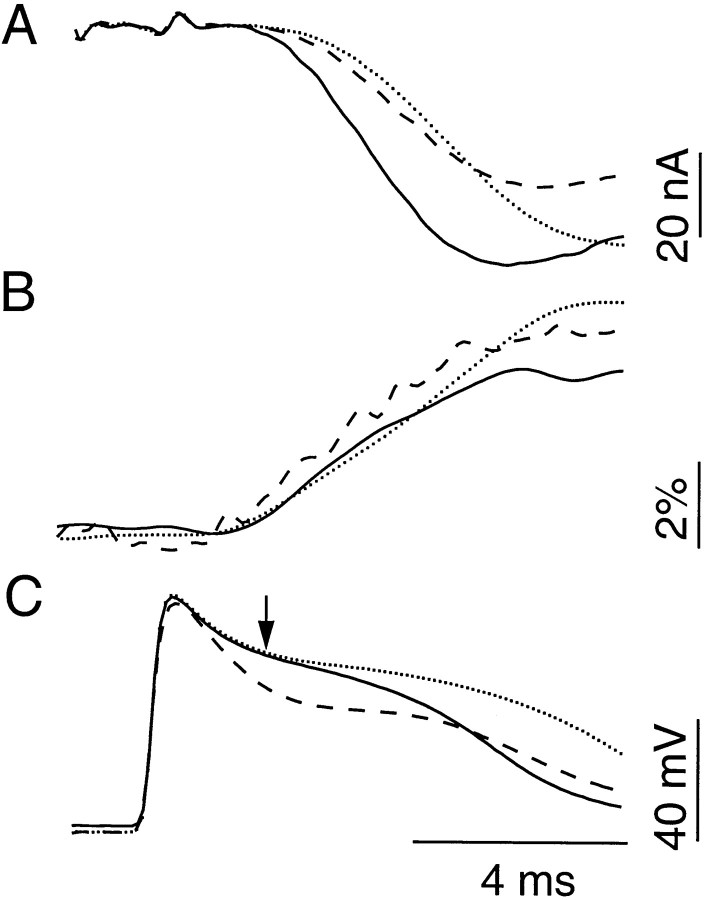Fig. 3.
Photometric measurement of Ca2+transients can detect small changes in presynaptic Ca2+ influx. A, The first (dotted line) and second (solid line) IPSCs activated by a paired-pulse protocol are aligned to show that facilitation is primarily associated with a leftward shift in the IPSC rising phase. Also superimposed is a reference IPSC recorded in 10 mm TEA. The reference IPSC (broken line) exhibits a faster rising phase than the control IPSC (dotted line) but has a lower peak amplitude. B, The Ca2+ transient corresponding to the reference IPSC (broken line) shows a faster rising phase than the transients elicited by the first and second action potentials of the paired-pulse protocol. (The trace styles are matched to those in A.) Thus, the resolution of the photometric measurement is such that it can detect changes in Ca2+ influx that result in crossing between the reference and control IPSCs shown in A.C, Action potentials recorded simultaneously withtraces shown in A and B, with matched trace patterns. The arrow indicates a point 1.5 msec after the peak of the action potentials. Eachtrace represents the average of 100 trials.

